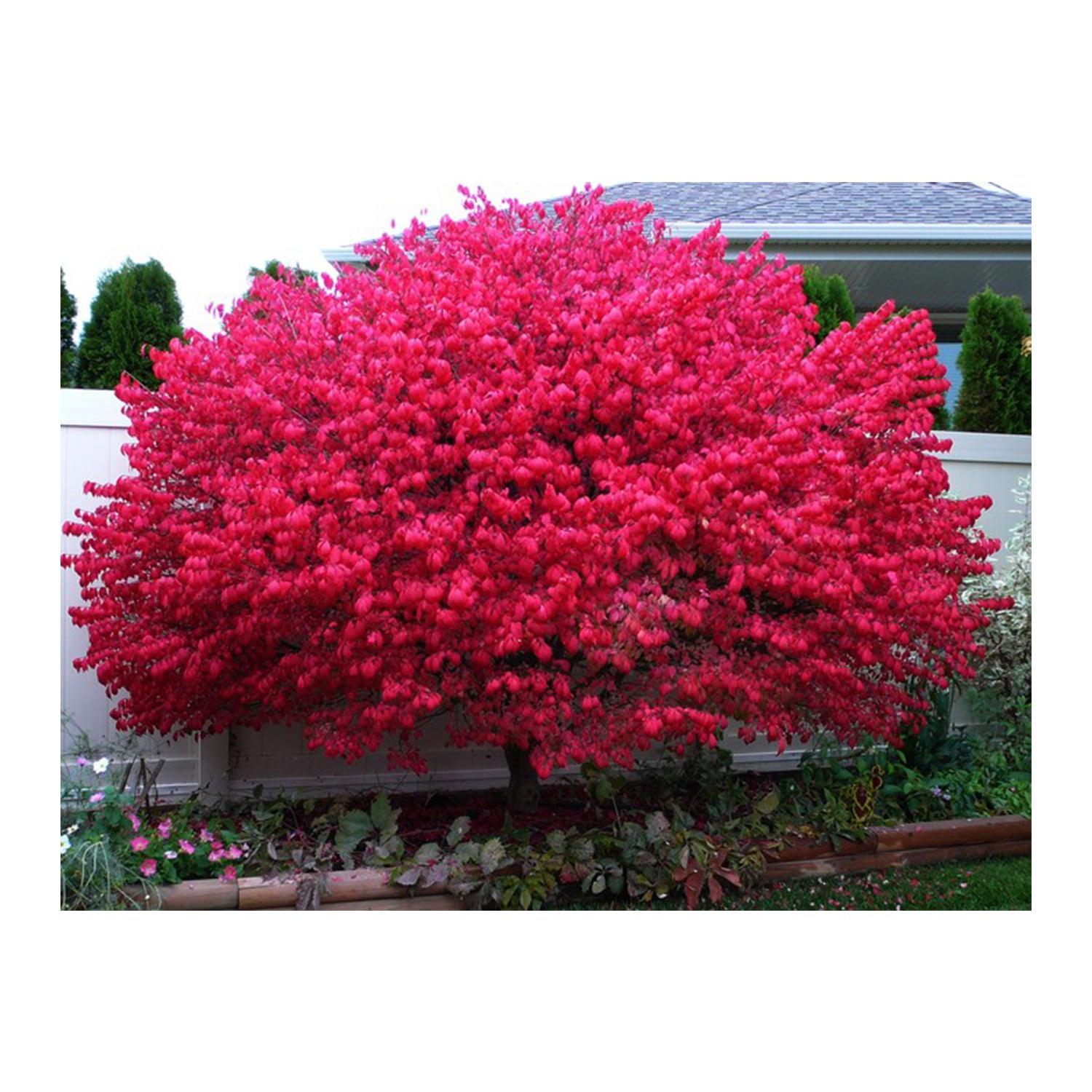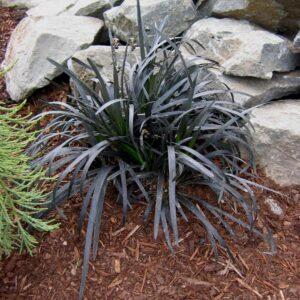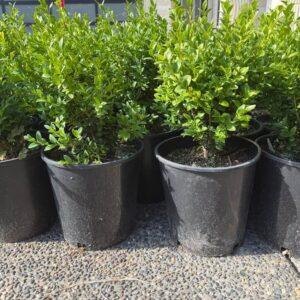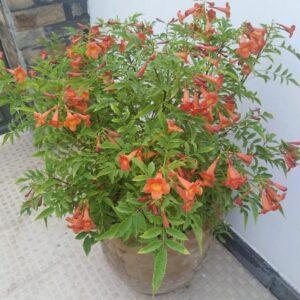Burning Bush Euonymus alatus – The Fiery Fall Marvel
The Burning Bush, scientifically known as Euonymus alatus, is a deciduous shrub best known for its spectacular fiery red foliage in autumn, which makes it a show-stopping ornamental plant in temperate gardens. Native to eastern Asia (China, Korea, Japan), it has gained immense popularity in North America, Europe, and parts of India for its low-maintenance care, symmetrical shape, and stunning seasonal color.
Although commonly used as a hedge, privacy screen, or landscape focal point, it is also referred to as Red Bush due to its vivid crimson appearance in the fall.
🌿 General Description
Botanical name: Euonymus alatus
Common names: Burning Bush, Red Bush, Winged Spindle Tree, Winged Euonymus
Plant type: Deciduous shrub
Height: 6–12 feet (1.8–3.6 meters), sometimes taller
Spread: 6–10 feet (1.8–3 meters)
Foliage: Dark green elliptical leaves that turn bright red in autumn
Flowers: Small greenish-yellow flowers (spring)
Fruits: Red/orange berries enclosed in capsules (late summer/fall)
☀️ Light and Temperature Requirements
Sunlight:
Grows in full sun to partial shade.
For best red fall color, plant in full sun (6–8 hours daily).
Shadier areas result in less intense foliage color.
Temperature:
Hardy in USDA Zones 4–8.
Thrives in temperate climates, tolerating winters down to -30°C (-22°F).
Not suited for tropical climates with no winter dormancy period.
🔥 Cooler night temperatures in autumn enhance red leaf development.
💧 Watering Routine
Burning Bush is drought-tolerant once established, but performs best with consistent moisture.
New plants (first 1–2 years):
Water deeply once or twice per week until well-rooted.
Established plants:
Water once a week, especially in dry or hot periods.
Allow top 1–2 inches of soil to dry out between waterings.
🚫 Avoid overwatering—can lead to root rot in poorly drained soils.
🌱 Soil and Fertilizer Needs
Soil:
Prefers well-draining loamy or sandy soil.
Tolerates a range of soil types, including slightly acidic to alkaline (pH 6.0–7.5).
Fertilizer:
Fertilize once a year in early spring.
Use a balanced slow-release fertilizer (e.g., 10-10-10) or organic compost.
Avoid over-fertilization—it can encourage leggy growth and reduce color intensity.
🌿 Adding mulch (2–3 inches) around the base helps retain moisture and regulate soil temperature.
✂️ Pruning and Maintenance
Burning Bush responds well to pruning and shaping.
When to prune:
Best in late winter or early spring before new growth begins.
Light pruning for shape can be done in summer.
How to prune:
Remove crossing, dead, or diseased branches.
Cut back up to 1/3 of plant height if needed to rejuvenate growth.
For a hedge look, trim uniformly across the top and sides.
🛠️ Pruning helps improve airflow and can prevent fungal diseases.
🌿 Propagation
Cuttings (preferred method):
Take 4–6 inch semi-hardwood cuttings in late summer.
Dip in rooting hormone and plant in moist, well-draining soil.
Rooting may take 6–8 weeks.
Seeds:
Collect seeds in fall from the berries.
Requires cold stratification (chill in moist soil for 2–3 months).
Germination is slow and variable.
🐛 Pests and Diseases
Generally pest-free and disease-resistant, but may occasionally encounter:
Scale insects
Spider mites
Powdery mildew or leaf spot in overly humid or crowded conditions
🛡️ Prevent with good airflow, clean pruning, and neem oil or insecticidal soap when needed.
⚠️ Invasiveness Warning (Some Regions)
In certain regions (especially the northeastern U.S.), Burning Bush has been classified as invasive due to its tendency to spread via seeds and dominate native plant habitats.
✅ Always check local regulations before planting. In India and some parts of Asia, it’s non-invasive and safe for cultivation.
🎨 Landscaping Uses
Stunning specimen plant in autumn
Beautiful hedges and screens
Accent plant in cottage or formal gardens
Adds seasonal interest alongside evergreens
Pairs well with ornamental grasses, hydrangeas, and conifers.
✅ Conclusion
The Burning Bush (Red Bush) is a dramatic, low-maintenance shrub that turns up the color in any landscape—especially in autumn when it explodes in a blaze of crimson glory. With just basic watering, light pruning, and good sunlight, it will reward you for years as a standout garden centerpiece or privacy hedge.”





Reviews
There are no reviews yet.